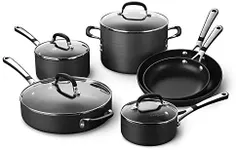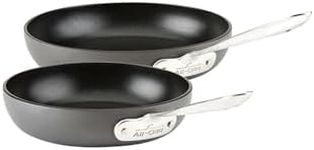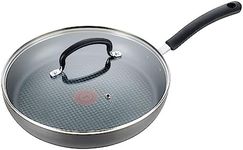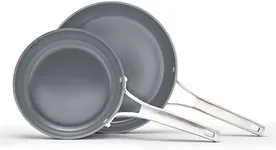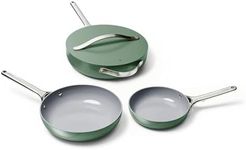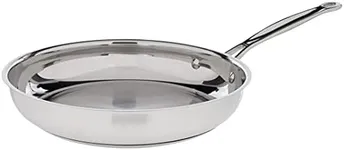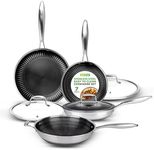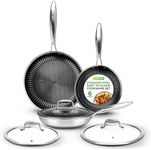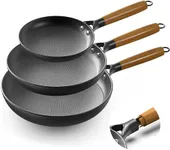Buying Guide for the Best Induction Pans
Choosing the right induction pan is crucial for efficient and enjoyable cooking. Induction pans are designed to work with induction cooktops, which use electromagnetic fields to heat the pan directly. This method is faster and more energy-efficient than traditional gas or electric stoves. When selecting an induction pan, it's important to consider several key specifications to ensure you get the best performance and durability for your cooking needs.MaterialThe material of the induction pan is important because it affects heat conductivity and durability. Induction pans must be made of ferromagnetic materials like stainless steel or cast iron to work with induction cooktops. Stainless steel is durable, resistant to rust, and often has an aluminum or copper core for better heat distribution. Cast iron retains heat well and is excellent for slow cooking but is heavier and requires more maintenance. Choose stainless steel for versatility and ease of use, or cast iron for specific cooking techniques that benefit from its heat retention.
Base ThicknessThe thickness of the pan's base affects how evenly heat is distributed and how well the pan retains heat. A thicker base generally means better heat distribution and retention, which can prevent hot spots and ensure even cooking. Thin bases may heat up quickly but can lead to uneven cooking and warping over time. For most home cooks, a medium to thick base (around 3-5mm) is ideal as it provides a good balance between heat distribution and responsiveness.
Non-Stick CoatingNon-stick coatings make cooking and cleaning easier by preventing food from sticking to the pan. This is particularly useful for cooking delicate foods like eggs or fish. However, non-stick coatings can wear off over time and may not be suitable for high-heat cooking. If you frequently cook with high heat or need a pan for searing, consider a pan without a non-stick coating or one with a high-quality, durable non-stick surface. For everyday cooking and easy cleanup, a non-stick pan can be very convenient.
Size and ShapeThe size and shape of the pan should match your cooking needs and the size of your induction cooktop. Pans come in various diameters, typically ranging from 8 to 12 inches. Larger pans are great for cooking for a family or making large batches, while smaller pans are suitable for single servings or small dishes. The shape also matters; for example, a deep sauté pan is ideal for dishes with sauces, while a shallow frying pan is better for searing and browning. Consider what types of dishes you cook most often and choose a size and shape that will accommodate those needs.
Handle DesignThe handle design affects the comfort and safety of using the pan. Look for handles that are securely attached and made of heat-resistant materials to prevent burns. Ergonomically designed handles provide a comfortable grip and better control, especially when the pan is full. Some pans have helper handles on the opposite side, which can be useful for lifting and moving heavy pans. Choose a handle design that feels comfortable in your hand and provides good balance and control.
CompatibilityNot all pans are compatible with induction cooktops. To ensure compatibility, check for a label or symbol indicating that the pan is induction-ready. This usually means the pan has a magnetic base. You can also test compatibility by placing a magnet on the bottom of the pan; if it sticks, the pan will work with an induction cooktop. Ensuring compatibility is crucial for the pan to function properly on your induction stove.
